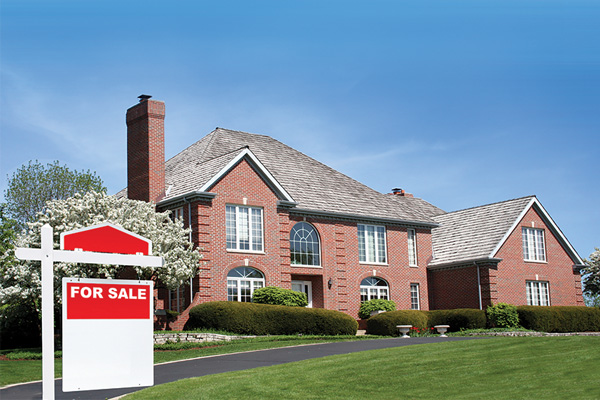It’s the age-old chicken-or-egg story of the housing market: Should you buy that home now, while interest rates are still fairly low? Or wait for rising prices to moderate?
Of course, there are many factors that will go into your decision. But here’s one you probably haven’t considered, and it has real “buy now” implications: Mortgage payments zoomed last year and are likely to rise even higher this year, continuing a trend that has persisted for the past six years.
CoreLogic, a data analytics company that has been tracking mortgage payments for the past generation, says that while home prices may be up 6 percent through August of last year, the average mortgage payment went up 10.1 percent during the corresponding period. And for 2018, the typical home loan payment is likely to rise by more than 11 percent.
That’s a good bit more than most of us have been seeing in yearly raises, if we get them at all.
CoreLogic’s “typical mortgage payment” (TMP) is a mortgage rate-adjusted monthly payment based on each month’s median home sale price in the United States. It tends to move up or down based on factors such as mortgage rates and size of down payments.
Their TMP can help buyers judge affordability, according to CoreLogic’s Andrew LePage, “because it shows the monthly amount a borrower would have to qualify for in order to get a mortgage to buy the median priced home.”
Of the four components of a mortgage payment – often compartmentalized as PITI, for principal, interest, taxes and insurance – the TMP measures only the principal and interest payments. It assumes a 20 percent down payment, the amount necessary to avoid having to pay for private mortgage insurance (PMI), and a 30-year, fixed-rate loan. Of course, many homebuyers put less than 20 percent down and must purchase PMI, which can add several hundred dollars more to their monthly house payment.
The typical mortgage payment was higher than today’s TMP before the Great Recession, which stands to reason, as home prices climbed to unsustainable highs before the markets crashed in 2008. Back in June 2006, before things started to go south, the typical monthly payment was $1,250. That fell to a low of $546 in February 2012, and has risen steadily since then to $816 as of August of last year. That comes to about a 50 percent increase over five years, or about 10 percent a year.
Of course, in 2006, the average mortgage rate was a lot higher: 6.7 percent, compared to 3.9 percent last August. And the inflation-adjusted median sales price was higher, too: $243,000, compared with $217,000 last year.
In addition to last year’s 10 percent jump in the TMP, CoreLogic is predicting that the typical payment is projected to rise by 11.3 percent this year, to $908.
“Real disposable income is projected to rise 3.6 percent over the same period, meaning this year’s buyers would see a larger chunk of their incomes devoted to mortgage payments,” says LePage.
That makes for a good argument to buy that home now. But there’s an inventory problem, with many potential sellers on the fence about whether to sell or not.
According to down payment protection firm ValueInsured, sellers are hesitating to sell now because of the high price they feel they will have to pay for their next homes. The firm conducted a survey of about 1,000 American homeowners, and many of those who say they want to sell – either to upgrade or downsize – are having second thoughts.
“Homeowners, in many cases, are eager to sell but don’t want to become buyers,” says Joe Melendez, chief executive of ValueInsured.
So even though it’s a seller’s market due to low inventory, some owners are thinking of renting their houses rather than selling. Either that, or they are considering passing their homes on to a family member. Even millennials are taking a wait-and-see attitude because of uncertainty over job changes.
Here’s what the numbers look like, according to the ValueInsured survey:
- 72 percent say they are concerned with timing the real estate market.
- 63 percent say now is a good time for them to sell, but not to buy, due to high home prices.
- 61 percent are “waiting until prices to buy are better to make a move.”
- About 26 percent of potential sellers “say they second-guess their desire to sell because they don’t want to pay brokers’ fees, new mortgage closing costs, capital gains taxes and other associated expenses, as it would weaken their buying power for their next home,” says the firm.
There’s no doubt that many housing markets are currently overvalued: According to a recent CoreLogic report, 48 of the nation’s top 50 markets are overvalued.
According to Melendez, “These homeowners have experienced a lot of home-value volatility and see more uncertainties looming – tax reform, for example. By hesitating, these homeowners are actually controlling the market on both sides. Reassuring these individuals is the key to unlocking inventory.”
He adds, “selling and buying are always fraught with worrying about timing the market, and life events don’t always cooperate.”
Taking the longer view may be helpful for both would-be buyers and sellers, he says. “Eventually, younger people move for jobs and empty-nesters need to leave their five-bedroom homes.”
Lew Sichelman has been covering real estate for more than 30 years. He is a regular contributor to numerous shelter magazines and housing and housing-finance industry publications. Freelance writer Mark Fogarty contributed to this report.

